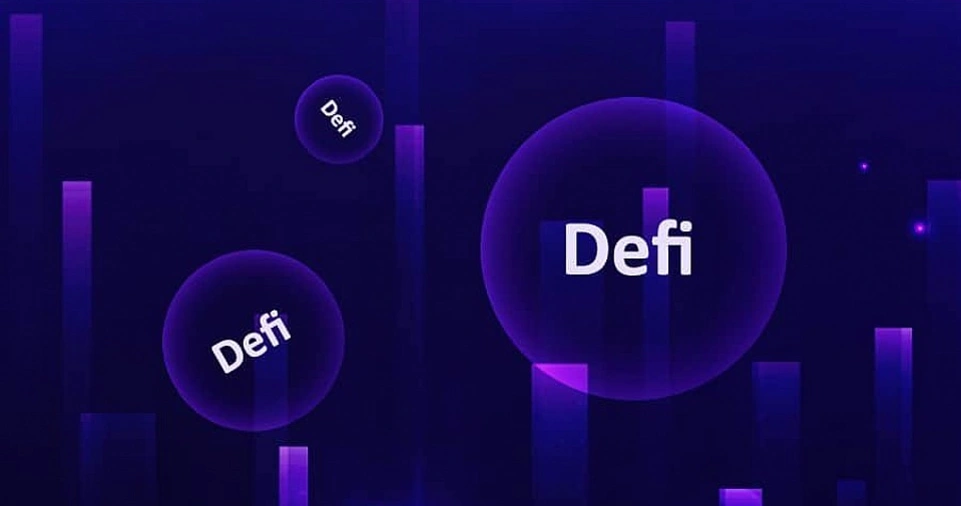Decentralized Finance (DeFi) is revolutionizing the financial industry by providing open and permissionless financial services.
However, the DeFi ecosystem is also rife with risks, including smart contract vulnerabilities, liquidity risks, regulatory uncertainties, and fraudulent schemes.
Investors and users need to be well-informed to protect themselves from potential losses. This article explores how to mitigate these risks effectively by identifying common threats and implementing strategic protective measures.
Understanding DeFi Risks

To safeguard your investments in DeFi, it is essential to understand the key risks:
Smart Contract Vulnerabilities
Smart contracts automate transactions on the blockchain but are susceptible to coding errors and exploits.
Hackers often exploit these vulnerabilities to steal funds. These vulnerabilities arise from poor coding, lack of audits, and unforeseen flaws in logic. Even well-established projects have faced devastating exploits, leading to millions in losses.
Impermanent Loss
Liquidity providers (LPs) may suffer impermanent loss when the value of their deposited assets fluctuates, leading to potential losses when compared to holding the assets separately.
This occurs in automated market makers (AMMs) like Uniswap and SushiSwap, where price differences between deposited assets cause imbalances in liquidity pools.
Rug Pulls and Exit Scams
Fraudulent projects lure investors with high returns and suddenly withdraw liquidity, leading to significant financial losses.
This can happen when developers control large portions of the tokens or smart contracts, allowing them to abandon the project overnight.
Regulatory and Compliance Risks
DeFi operates in a legal grey area, exposing investors to the risk of sudden regulatory crackdowns that can impact the viability of their investments.
Governments worldwide are increasingly scrutinizing DeFi, and regulations could affect the operability of certain protocols or impose restrictions on access and functionality.
Market and Liquidity Risks
Since DeFi markets are highly volatile, price fluctuations can lead to liquidation and reduced accessibility to assets during market downturns.
Unlike traditional finance, DeFi operates on smart contracts, making instant reactions to extreme market movements necessary.
Private Key and Security Risks
Loss or theft of private keys can result in the permanent loss of assets as DeFi transactions are irreversible.
This makes security precautions like hardware wallets and secure backups essential to ensure fund safety.
Flash Loan Attacks
Flash loans are unsecured loans that must be repaid within a single transaction. Attackers use these to manipulate market conditions, exploit smart contract weaknesses, and drain funds from liquidity pools. Such attacks have become prevalent, leading to massive losses in various protocols.
Oracle Manipulation
Many DeFi protocols rely on price oracles to determine asset values. If attackers can manipulate these oracles, they can execute trades at unfair prices, leading to losses for other participants in the ecosystem.
ALSO READ: How to Identify Promising Altcoins Before They Surge?
Strategies to Avoid DeFi Risks

Below are strategies to mitigate risks when participating in the DeFi ecosystem.
Conduct Thorough Research (DYOR)
- Analyze project whitepapers.
- Verify smart contract audits.
- Check the project team’s background.
- Investigate the community and developer engagement.
- Ensure that governance mechanisms are transparent and fair.
Use Reputable DeFi Protocols
Opt for established protocols with a proven security track record. Examples include:
- Aave (for lending and borrowing)
- Uniswap (for decentralized exchanges)
- MakerDAO (for stablecoin issuance)
- Compound (for decentralized lending)
- Curve Finance (for stablecoin liquidity pools)
Ensure Smart Contract Security
- Only invest in projects with third-party audits from firms like CertiK and ConsenSys.
- Use insurance options such as Nexus Mutual for coverage against smart contract failures.
- Check if the code is open-source and reviewed by multiple developers.
- Monitor governance decisions that can change smart contract logic.
Diversify Your Investments
Diversification minimizes risk by spreading capital across different assets and DeFi platforms. Consider a mix of:
- Lending and borrowing protocols
- Decentralized exchanges (DEXs)
- Yield farming and staking
- Cross-chain investments to reduce dependency on a single blockchain ecosystem
Manage Liquidity Risks
- Avoid over-leveraging assets.
- Participate in pools with high Total Value Locked (TVL).
- Be mindful of market fluctuations that can affect liquidity.
- Check the level of decentralization in liquidity pools to avoid central points of failure.
Beware of High-Yield Offers
High returns often indicate high risk. Red flags include:
- Anonymous teams
- No external audits
- Unusual tokenomics
- Inflated rewards without sustainable mechanisms
Secure Private Keys and Wallets
- Use hardware wallets (Ledger, Trezor) for enhanced security.
- Enable multi-factor authentication (MFA) where possible.
- Store seed phrases securely and avoid sharing them.
- Utilize multi-signature wallets for additional protection.
Monitor Regulatory Changes
- Stay updated on global regulations surrounding DeFi.
- Use compliant services where applicable to avoid legal risks.
- Consider using hybrid DeFi platforms that incorporate compliance mechanisms.
Utilize DeFi Insurance
DeFi insurance platforms like Nexus Mutual, Cover Protocol, and InsurAce offer coverage against smart contract failures and fund losses. Ensure you understand the terms and exclusions before purchasing a policy.
Use Risk Management Tools
Several DeFi tools help manage risks effectively:
- DeFi Pulse: Tracks protocol health and risk levels.
- Zapper.fi: Provides a dashboard for tracking DeFi investments.
- Rekt.news: Reports on exploited DeFi projects.
- Gauntlet: Provides risk analysis for DeFi strategies.
- Risk Harbor: Analyzes risk exposure in DeFi protocols.
ALSO READ: How to Create Engaging Content About Cryptocurrencies?
Comparative Table: DeFi Risks and Mitigation Strategies

| Risk Type | Description | Mitigation Strategy |
|---|---|---|
| Smart Contract Vulnerability | Bugs and exploits in smart contracts | Use audited protocols, opt for DeFi insurance |
| Impermanent Loss | Loss due to price fluctuation in liquidity pools | Choose stable liquidity pairs, hedge risks |
| Rug Pulls | Fraudulent teams withdraw liquidity | DYOR, avoid anonymous projects |
| Regulatory Risks | Sudden government interventions | Follow compliance guidelines, diversify protocols |
| Liquidity Risks | Market fluctuations affecting asset availability | Diversify investments, use reliable pools |
| Private Key Theft | Loss or theft of private keys | Use hardware wallets, enable MFA |
| Flash Loan Attacks | Manipulation of DeFi lending protocols | Use risk monitoring tools, support robust lending governance |
| Oracle Manipulation | Price feeds exploited for unfair trades | Use decentralized oracles like Chainlink |
Conclusion
The DeFi ecosystem offers unparalleled financial opportunities, but it comes with inherent risks.
By conducting proper research, using secure protocols, diversifying investments, and employing risk management tools, investors can navigate DeFi safely and optimize their returns while minimizing potential losses.
As the sector evolves, staying updated on new security measures and regulatory changes will be crucial in mitigating risks effectively.







